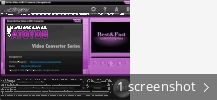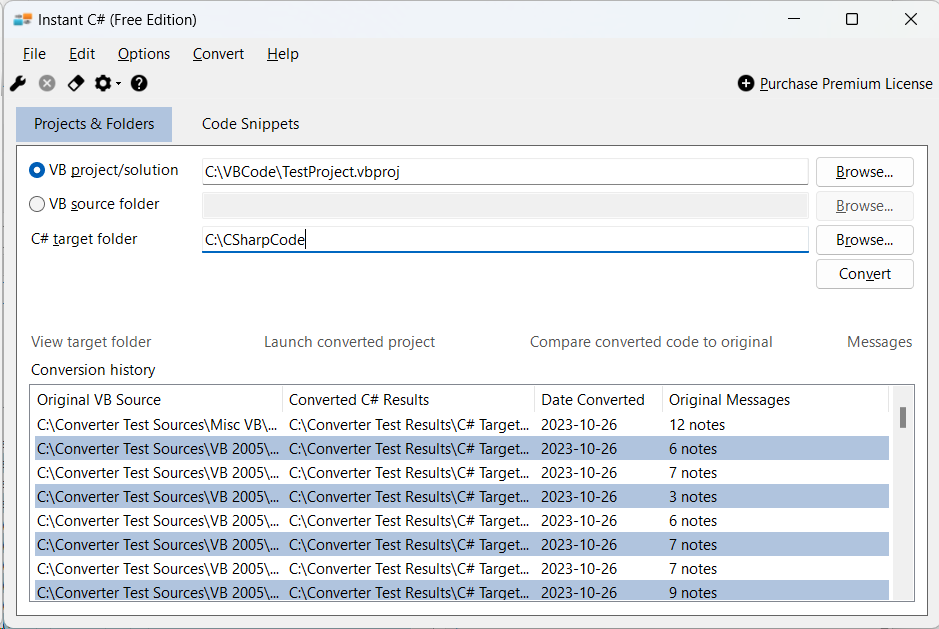Use Convert Functions In Linq Download Free
Language-Integrated Query (LINQ) is not only about retrieving data. It is also a powerful tool for transforming data. By using a LINQ query, you can use a source sequence as input and modify it in many ways to create a new output sequence. You can modify the sequence itself without modifying the elements themselves by sorting and grouping. But perhaps the most powerful feature of LINQ queries is the ability to create new types. This is accomplished in the select clause. For example, you can perform the following tasks:
Merge multiple input sequences into a single output sequence that has a new type.
Create output sequences whose elements consist of only one or several properties of each element in the source sequence.
Create output sequences whose elements consist of the results of operations performed on the source data.
Create output sequences in a different format. For example, you can transform data from SQL rows or text files into XML.
Search for jobs related to Convert sql query to linq lambda expression online or hire on the world's largest freelancing marketplace with 19m+ jobs. Filter the results to include only active and pending marks, download all results in xml, convert the xml to microsoft word in 8.5 x 11 format, deliver the file to the user. Public static System.Linq.Expressions.UnaryExpression Convert (System.Linq.Expressions.Expression expression, Type type); The following code example shows how to create an expression that represents a type conversion operation. Download microsoft office project scope template free. // Add the following directive to your file: // using System.Linq.


These are just several examples. Of course, these transformations can be combined in various ways in the same query. Furthermore, the output sequence of one query can be used as the input sequence for a new query.
Joining Multiple Inputs into One Output Sequence
You can use a LINQ query to create an output sequence that contains elements from more than one input sequence. The following example shows how to combine two in-memory data structures, but the same principles can be applied to combine data from XML or SQL or DataSet sources. Assume the following two class types:
The following example shows the query:
For more information, see join clause and select clause.
Selecting a Subset of each Source Element
There are two primary ways to select a subset of each element in the source sequence:
To select just one member of the source element, use the dot operation. In the following example, assume that a
Customerobject contains several public properties including a string namedCity. When executed, this query will produce an output sequence of strings.To create elements that contain more than one property from the source element, you can use an object initializer with either a named object or an anonymous type. The following example shows the use of an anonymous type to encapsulate two properties from each
Customerelement:
For more information, see Object and Collection Initializers and Anonymous Types.

Transforming in-Memory Objects into XML
Microsoft Linq Download
LINQ queries make it easy to transform data between in-memory data structures, SQL databases, ADO.NET Datasets and XML streams or documents. The following example transforms objects in an in-memory data structure into XML elements.
The code produces the following XML output:

For more information, see Creating XML Trees in C# (LINQ to XML).
Performing Operations on Source Elements

An output sequence might not contain any elements or element properties from the source sequence. The output might instead be a sequence of values that is computed by using the source elements as input arguments.
The following query will take a sequence of numbers that represent radii of circles, calculate the area for each radius, and return an output sequence containing strings formatted with the calculated area.
Use Convert Functions In Linq Download Freeware
Each string for the output sequence will be formatted using string interpolation. An interpolated string will have a $ in front of the string's opening quotation mark, and operations can be performed within curly braces placed inside the interpolated string. Once those operations are performed, the results will be concatenated.
Use Convert Functions In Linq Download Free Download
Note
Not only the music but the collection of various other elements that are related with the theme of the radio makes Hrvatski Radio Drugi Program a very compelling online radio station of. Version 4.0 removes the availability of the extra smart rooms in Huddle Hub MRE units. Version 4.0 unifies the existing Huddle Hub One SRE (Single Room Edition) and MRE (Multi Room. download free, software hrt drugi program live streaming tvri.
Calling methods in query expressions is not supported if the query will be translated into some other domain. For example, you cannot call an ordinary C# method in LINQ to SQL because SQL Server has no context for it. However, you can map stored procedures to methods and call those. For more information, see Stored Procedures.
C# Using Linq
See also

